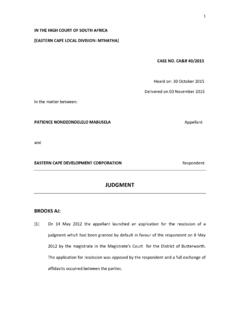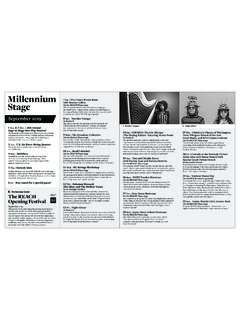Transcription of Domperidone and breastfeeding
1 To find your nearest breastfeeding Supporter call the Supporterline 0300 100 0210 Calls to 0300 numbers cost no more than calls to UK numbers starting 01 and 02 and will be part of any inclusive minutes that apply to your provider and call package The breastfeeding Network is a Company Limited by Guarantee Registered in Scotland Company No. 330639 Registered office Whitelaw Wells, 9 Ainslie Place, Edinburgh, EH3 6AT The breastfeeding Network is a Registered Scottish Charity No SC027007 Wendy jones PhD, MRPharmS and the breastfeeding Network Feb 2017 Page 1 of 8 All correspondence to: The breastfeeding Network PO Box 11126, Paisley PA2 8YB Admin Tel: 0844 412 0995 e-mail: Domperidone and breastfeeding This document provides information for mothers and healthcare professionals to reach their own decisions.
2 It is not intended to imply recommendations for use of Domperidone as a galactagogue nor a dose regimen. Domperidone is a drug prescribed for nausea and vomiting. It also speeds emptying of the gut (prokinetic). Until September 2014 it was sold over the counter in the UK. It is not licensed for any indication in the USA because of concerns about arrhythmia. Domperidone has been prescribed off label for babies with reflux. Following a European Review by PRAC (1) the MHRA updated their advice on the prescription of Domperidone in May 2014 (5) (Appendix 1). They advise that Domperidone is associated with a small The prescription of Domperidone should be avoided in the following situations (1-3).
3 Where either mother or baby has any evidence of cardiac abnormalities and specifically arrhythmia is receiving other medications known to prolong QT interval or potent CYP3A4 inhibitors quinolone antibiotics, ketoconazole (fluconazole may also be considered a risk), macrolide antibiotics, SSRI antidepressants, tricyclic antidepressants, salbutamol(4) where severe hepatic impairment has been identified in mother or baby where either mother or baby has high or low levels of potassium, or low levels of magnesium (4) Before prescribing Domperidone other measures to increase milk supply should be in place. These include an assessment by someone skilled in breastfeeding support alongside expressing both breasts, at least 8 times in 24 hours including overnight.
4 The maximum dose as a galactagogue should be 10mg three times a day. This prescription should be reviewed at 7 days and further prescriptions should be considered at a reducing dose. Mothers should be counselled as to the adverse effects of Domperidone (abdominal cramping, dry mouth, depressed mood and headache) and advised to report any changes in their baby's behaviour immediately To find your nearest breastfeeding Supporter call the Supporterline 0300 100 0210 Wendy jones PhD, MRPharmS and the breastfeeding Network Feb 2017 Page 2 of 8 increased risk of serious cardiac side effects. These have been reported predominantly in over 60s who had cardiac problems, were taking other drugs which also cause arrhythmia or were taking a dose of Domperidone greater than 10mg three times a day (6, 7).
5 Side effects Other than those identified by MHRA, side effects are rare they include stomach cramps, dry mouth, headache and occasionally Domperidone is associated with depressed mood (although less than metoclopramide). Evidence of effectiveness Domperidone has been used as a galactagogue (to increase milk supply), use for which is off-label, utilising its effect of increasing prolactin. Studies have predominantly been around use in mothers of pre-term infants who are struggling to establish lactation 2 to 4 weeks after delivery. The studies have shown that Domperidone is effective in increasing breastmilk production. Very small amounts of Domperidone pass into breastmilk.
6 The amount depending on the dose that the mother takes. Decision to prescribe for Domperidone is the responsibility of the person signing the prescription. This document aims to provide sufficient information for individual decision making bearing in mind the risk to the mother and baby of not breastfeeding compared to the possible risk of the drug. There is no evidence of increased risk to health young women who do not fall into any of the at risk categories (8) Of the thousands of mothers the authors of this statement have collectively treated with Domperidone for the purposes of breastfeeding support, no one is aware of a single case of maternal death from ventricular arrhythmia. In fact, Health Canada s Canada Vigilance Program has confirmed that between 1965 and 2011, there were no cardiac-related deaths reported among women taking Domperidone However.
7 We know that breastfeeding and breastmilk are important for optimal health long and short term for mother and baby We have research that Domperidone increases prolactin levels and milk volume in mothers who have delivered pre term babies and are producing insufficient milk (9-16) We have data on the levels of Domperidone entering breastmilk and can be confident that these are very low (14-17) We do not have research suggesting that Domperidone causes risks to otherwise healthy, young women who are breastfeeding (8-16) The consensus statement of breastfeeding experts from Canada is that adverse effects to Domperidone given to increase lactation are exceptionally rare (8) So individual prescribing decisions should be made bearing in mind the recommendations of MHRA and the risk to mother and baby of not establishing full lactation To find your nearest breastfeeding Supporter call the Supporterline 0300 100 0210 Wendy jones PhD, MRPharmS and the breastfeeding Network Feb 2017 Page 3 of 8 Osadchy (9) reviewed 3 randomised controlled trials (DaSilva (10), Campbell-Yeo (11) and Petrolagia(12)) involving a total of 78 participants.
8 The results showed a relative increase in breastmilk production of over placebo. The study periods varied between 7 and 14 days. Only one study (Petrolagia(12)) referred to lactation counselling prior to prescription of medication or placebo. No follow up data on outcomes after the study period are available. Knoppert(13) studied pre-terms to determine the optimal dosage of Domperidone as a galactagogue randomising women to a regime of 10 or 20mg three times a day for 4 weeks. Following the study period the dose was tapered to a twice daily then daily regime before stopping. At the end of 4 weeks there was no statistically significant difference in the increased milk volumes between the 2 groups but the study was not powered to demonstrate this because of the number of women involved Fig 1 Milk volume as a function of dose (Reproduced from Knoppert (13)) There was a statistical difference in prolactin levels in both cohorts between baseline and day 10.
9 Mothers excluded from the study were those taking anti arrhythmia drugs, who had a family history of arrhythmia, were taking quinolone antibiotics, or drugs metabolised by CYP 3A4 ketoconazole, macrolide antibiotics. They were required to be pumping a minimum of 8 times in 24 hours. Following the cessation of the drug 4 mothers continued to measure milk volume 3 maintained their supply one dropped from 750ml per day to 500ml per day. Only one mother exhibited a side effect of nausea which resolved when she took the medication with food. Campbell-Yeo (11) studied the composition of breastmilk following maternal use of Domperidone . She analysed the macronutrient content with respect to protein, fat, carbohydrate and energy and macro mineral content of sodium, phosphorous and calcium of 44 women taking either 10mg three times a day of Domperidone or placebo.
10 Domperidone increased the volume of breast milk without substantially altering the nutrient composition. In the DaSilva study (10) 20 women in a double-blind, placebo-controlled protocol. Those prescribed Domperidone 10mg three times a day showed a steady increase in milk production over placebo. Mothers received counselling support and were double pumping. The increase in production achieved fell once the drug was stopped after seven days. The babies in the study were all in neonatal intensive care and the mothers were only expressing for feeds to be given via naso-gastric tube. The increase in milk volume began 48 hours after the drug was initiated and continued to the end of the trial.







